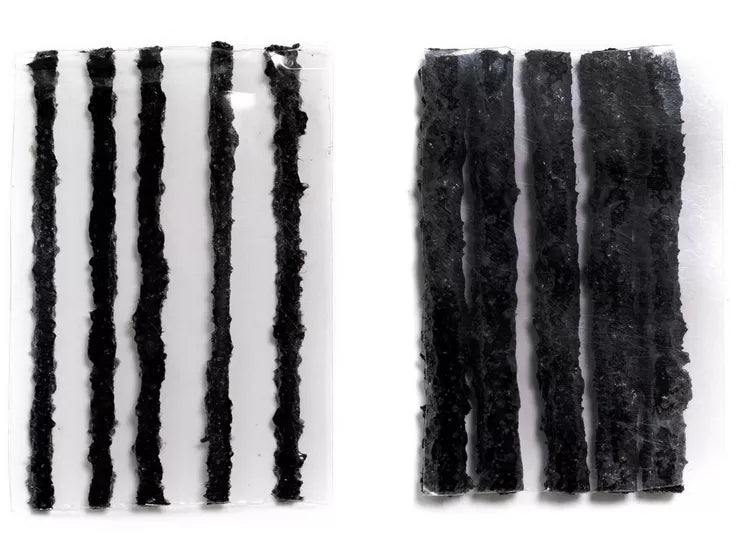
How to use Tubeless Tyre Plugs
For high volume (wide and fat) tyres found on MTB and hybrid leisure bikes, a tubeless setup has become a common way for riders to deal with and avoid punctures. However, occassionally some holes are just too big for sealant to seal and a bit of intervention is required. Let’s talk about how to use tubeless tyre plugs.
What is tubeless?
A clue to what tubeless is, is in the name. ie tubeless = no inner tube. Traditional setups have an inner tube pumped up inside a tyre. Tubeless replaces the inner tube with liquid sealant so if you get a puncture, the air pressure inside the tyre will force a bit of sealant through the hole and instantly seal it with little or no air-loss. Sounds great right? There are some caveats and compromises to consider though. Your rims must be tubeless compatible. Either built as so from the factory or converted using specialist tubeless tape to seal your spoke holes. Tubeless valves need to be fitted and tubeless tyres tend to be more expensive than standard tyres. Throw in some sealant and you won’t get much change out of £150 if you pay a shop to do it for you. Then you have to check and possibly replace your sealant, which can be quite messy, every 3 – 6 months. It sounds a faff but the benefits out on a ride, for most, make it a worthwhile investment.
When can tubeless fail?
There are a few scenarios where tubeless setups may fail.
- Tyre pressure is too low and your tyres ‘burp’ air
- Tyre not sealed fully
- A hole or cut too big for sealant to seal it
One of the major benefits of tubeless is the ability to run tyres at lower pressures for grip. With traditional tyre + tubes, low pressure risks pinch or impact punctures. If you run tubeless too low the tyre can deform or squirm so much it may lift or pull the bead off the rim momentarily which, in turn, releases some air called a ‘burp’. The fix here is simply add more air and don’t run the pressure so low.
Some new tubeless tyre installs can deflate slowly, usually overnight. This is usually because the bead hasn’t fully sealed during fitting and may be slowly leaking air but not enough to notice at the time. The fix here is maybe add more sealant or more commonly the sealant just needs to get where the leak is so spinning the wheel(s) or better, taking them for a ride will usually push the sealant to where it needs to go. If successful, small beads of sealant may appear around the edge of the tyre where it meets the rim.
If you are unlucky enough to cut your tyre out on the trail, firstly the sealant will try and do it’s work but if the hole is too big the air pressure will simply push the sealant out of the tyre. You’ll be faced with a spray of sealant and a hiss of air. Spinning the tyre to the 6 o’clock position may temporarily help as gravity will make the sealant pool around the hole but if that doesn’t work you either have to fit a tube, face a long walk home or fit a tubeless plug.
Further Reading
- Exploring the Pros and Cons of Tubeless Tyres on Electric Bikes
- How to setup tubeless tyres
- Ebike Tyres and Tubes – Explained
What are the benefits of a tubeless plug?
- Simple to use
- No need to remove the tyre
- Better reliability
- Longer lasting repair
Tubeless plugs are really simple to use, you don’t have to remove the tyre and face a messy tube install and the repair is designed to be a permanent fix akin to patching a tube.
Most tubeless plugs will deal with holes 1- 5mm. Anything above this size, you can try thicker or multiple plugs but our advice would be to consider a new tyre.

How to fit a tubeless plug
A tubeless plug repair kit consists of two key parts. 1. a plugger needle 2. a few plug strips. If you need to use one, follow these simple steps
- Turn your tyre to find the hole
- Remove any object in the hole that may have caused the puncture
- Thread a tubeless plug through the eye of your needle
- Push the needle and your plug into your hole. Straight is best.
- Pull the needle out of the tyre leaving the plug in the hole
- Re-inflate your tyre
TIP: If the hole is big, you may need to double up on your plugs. Just fit another.
